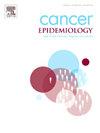1990年至2019年日本癌症发病率的年龄组队列分析
IF 2.4
3区 医学
Q3 ONCOLOGY
引用次数: 0
摘要
背景:癌症是全世界和全世界主要的公共卫生问题,因为它是残疾调整生命年(DALYs)和死亡率的主要原因之一。本研究旨在使用年龄-时期-队列(APC)模型分析1990年至2019年本文章由计算机程序翻译,如有差异,请以英文原文为准。
Age period cohort analysis of cancer incidence from 1990 to 2019 in Türkiye
Background
Cancer is a major public health concern worldwide and in Türkiye, as it is one of the leading causes of disability-adjusted life years (DALYs) and mortality. This study aims to analyze long-term cancer trends in Türkiye from 1990 to 2019 using the Age-Period-Cohort (APC) model to determine the independent effects of aging, time periods, and birth cohorts on cancer incidence.
Methods
Cancer incidence data for all cancers and the most common site-specific cancers in men and women were obtained from the Global Burden of Disease 2021 study. The analysis included 14 five-year age groups (20–94 years) and 6 five-year time periods (1990–2019). Age-standardized incidence rates (ASIR) per 100,000 persons were calculated using the world standard population. The APC analysis estimated net drift, local drifts, period rate ratios, and cohort rate ratios. The 2000–2004 period and 1945 birth cohort were set as reference points. Statistical analyses were conducted using the APC R-based Web Tool provided by the National Cancer Institute.
Results
The ASIR for all cancers in men exhibited a fluctuating pattern over the study period, without a consistent annual increase or decrease; while in women, the ASIR exhibited an upward trend, increasing by 1.32 % annually, reaching its peak in 2016. Lung and stomach cancer incidence declined in males, whereas prostate, colon and rectum and bladder cancers increased. Incidence rates were higher in the periods 1990–2000 and 2010–2019 compared to the reference period (2000–2004), with similar rates in both periods. In females, breast, uterine and thyroid cancers showed substantial increases. The increase in incidence rates became particularly noticeable from the 2005–2009 period onwards. The cohort effect revealed increasing risks in recent birth cohorts, particularly for breast, uterine, thyroid, prostate and bladder cancers.
Conclusion
The findings highlight the dynamic nature of cancer epidemiology in Türkiye, with variations across age groups, time periods, and birth cohorts. While Türkiye’s cancer incidence remains lower than in many developed countries, specific cancers, such as lung and stomach cancers, remain more prevalent. The rising burden of breast, uterine, prostate, bladder and colon and rectum cancers suggests an impact of aging, lifestyle changes, and screening programs. Continuous monitoring, preventive strategies, and early detection programs are crucial to mitigate future cancer trends.
求助全文
通过发布文献求助,成功后即可免费获取论文全文。
去求助
来源期刊

Cancer Epidemiology
医学-肿瘤学
CiteScore
4.50
自引率
3.80%
发文量
200
审稿时长
39 days
期刊介绍:
Cancer Epidemiology is dedicated to increasing understanding about cancer causes, prevention and control. The scope of the journal embraces all aspects of cancer epidemiology including:
• Descriptive epidemiology
• Studies of risk factors for disease initiation, development and prognosis
• Screening and early detection
• Prevention and control
• Methodological issues
The journal publishes original research articles (full length and short reports), systematic reviews and meta-analyses, editorials, commentaries and letters to the editor commenting on previously published research.
 求助内容:
求助内容: 应助结果提醒方式:
应助结果提醒方式:


